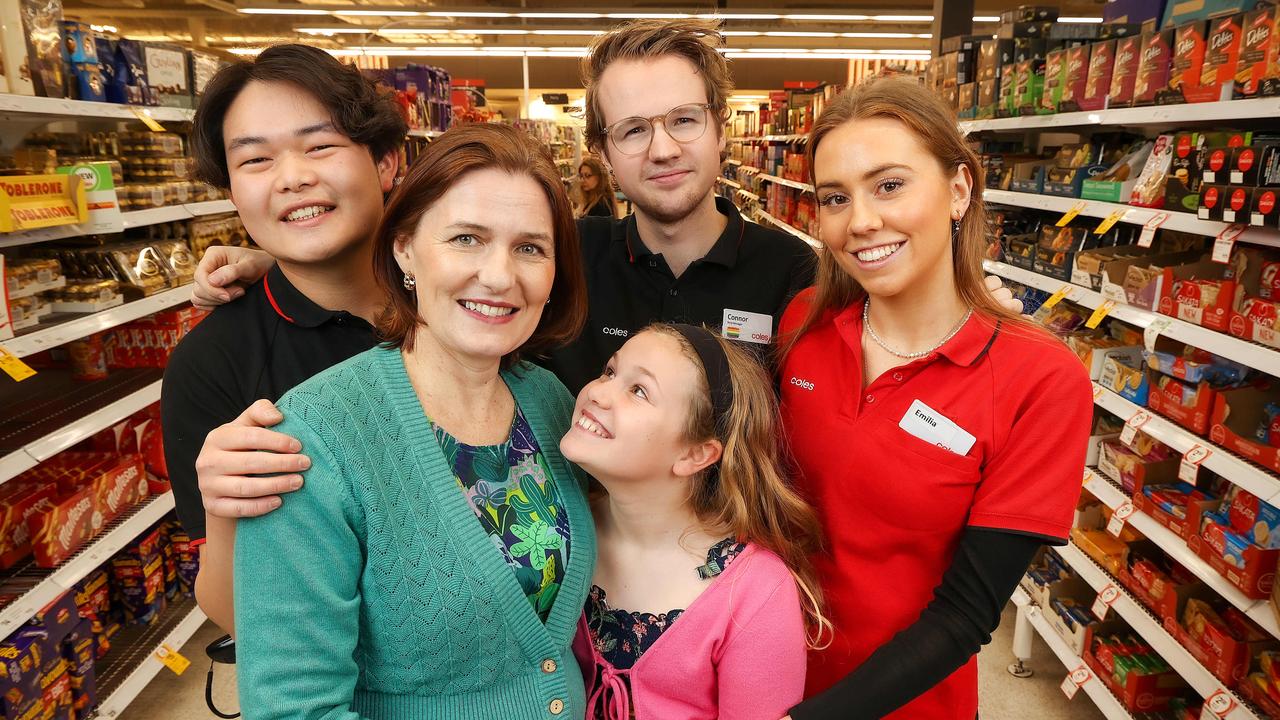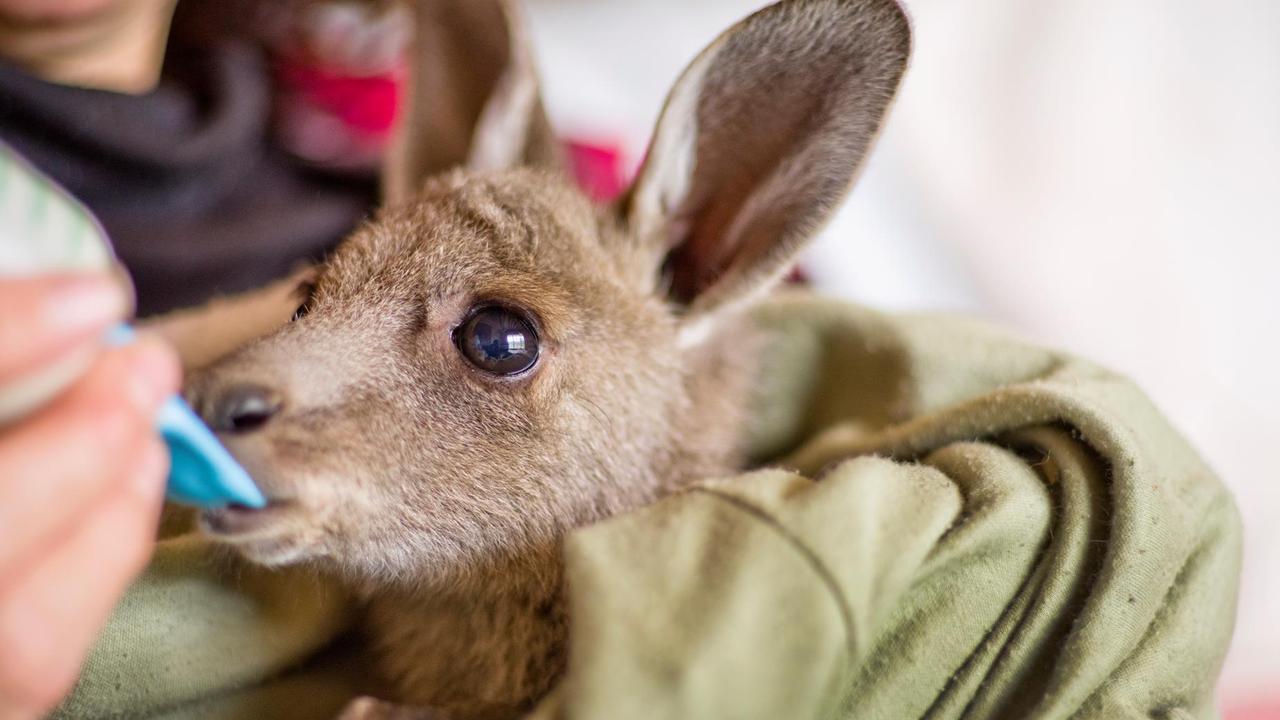The things that all Victorian kids will remember from their primary school days
Who can forget the smell of spirit-printed worksheets, the first slurp of a Sunnyboy or the ear-splitting shriek of a recorder? These are the things that stay with us from our primary school days.

VIC News
Don't miss out on the headlines from VIC News. Followed categories will be added to My News.
We’ve all been through it, and it was a uniquely formative part of our lives.
Primary school is the place we took our steps into the big, wide world, and the memories we carry from those times extend well beyond learning the alphabet and our multiplication tables.
If you went to primary school in Victoria, you’ll recognise these shared experiences.

CUISENAIRE RODS, BASE TEN BLOCKS
These nifty little sets helped us all learn adding, subtracting, multiplication and, later, the metric system.
Cuisenaire rods were coloured timber pieces split into lengths from 1cm to 10cm.
Base Ten Blocks came in 1cm and 10cm lengths, and in 10cm by 10cm sheets and could be made into a cube.
The brilliance of these educational tools is that they made us think while we played.

SPIRIT DUPLICATORS
Many of us of a certain age associate school life with the sweetly perfumed smell of freshly printed sheets from a spirit duplicator.
Some knew them as Fordigraph machines, or a Gestetner, or a Roneo, but they were the same basic thing.
A top sheet hid a layer of coloured wax (often purple) underneath. Teachers would create work sheets by writing on the top sheet.
Their pen nib pressed into the wax sheet, and then the wax sheet was inserted into a drum.
We’d crank the handle to spin the drum and churn out copies to share. Who didn’t press a printed sheet to their face and take a big whiff?
TUCK SHOP ICEBLOCKS
Glug. Razz. Sunny Boy. These were the tuck shop legends of our childhoods.
School canteens have changed a bit over the journey.
While today’s tuck shops and serving multigrain this and organic that, these legendary ice block brands (or reasonable facsimiles) were the highlight of lunchtime at Victorian primary school canteens and local milk bars in the 1970s and 1980s.
There may be good arguments against pumping kids full of sugar and sending them back into
classrooms with pure glucose coursing through their bloodstreams, but for many kids back in the day there was nothing better than one of these sweet, icy treats on a warm day.
Sadly, the Australian Juice Company pulled the plug on Sunny Boys, Razzes and Glugs in 2016, citing reduced consumer demands.
ABC SING
The ABC Sing books were the backbone of music lessons in our classrooms.
They were published annually between 1975 and 2014 and were accompanied by recordings of instrumentals or vocals so that we could all sing along.

The music featured a selection of popular songs, folk songs, show tunes, children’s songs and many ABC originals.
Each book featured about 60 songs, which were hand-picked by music education experts.
These wonderful books gave us a foundation for music appreciation that we might not otherwise have.
Read more about the ABC Sing program here.
You can find a complete index of every song used in the ABC Sings series here.
THE RECORDER
School would not have been school without the recorder, an instrument that many of us seemed to love but many parents feared.
Along with the ABC Sing series, recorder lessons taught us the joy of playing and understanding music – even if many of us didn’t really develop the required skills.
Regardless of our aptitude, recorders made up most of the numbers in school bands that blared God Save the Queen or Advance Australia Fair before generations of their classmates.
I can report that recorded lessons, and students practising at home, are still very much a thing.
SCHOOL BANKING
This was our lesson in the value of saving.
Generally, state school kids were given a State Bank account with a passbook and our own money box.
Mum and dad would give us some change and each week we would present to school with our passbooks, and slowly our savings would grow.
Many of us also donated money for “the less fortunate” while wen did our banking.
HERALD LEARN-TO-SWIM CERTIFICATES
Generations of Victorians learned to swim at school thanks to the Herald Learn-To-Swim campaign.

The campaign dates back to the 1920s and was a push by the Herald and Weekly Times to improve our water skills and avoid deaths by drowning.
In public baths and beaches across the state, we were put through our paces and taught the basics of water survival.
The final test was to swim 25 metres (or yards) unaided, and we treasured the certificates we won for that feat.
THE SCHOOL TV
Yes, kids. Once upon a time, schools only had one television set (if they were lucky).
It often wasn’t a colour TV. And it didn’t connect to the internet.
The school television sat atop a rickety trolley and, once our teachers had wrestled with the antenna to get some decent reception.
Generally, it was used so that we could watch ABC Schools programming including Behind The News, which has been informing schoolkids since 1968.
BTN is still a part of school education.
Here’s a 50th anniversary blast from the past including ABC Victoria’s TV weather presenter Paul Higgins, who hosted BTN in the ‘80s and ‘90s.
PENCIL CASES AND BOOK COVERINGS
Generally, these came in two types – vinyl or tartan material – and may or may not have come with plastic pockets to insert cut-out letters to spell your name.
Kids from fancy families had labels or (GASP!) embossing for their pencils. The rest of us made do with a slice out of the enamel from a retractable knife for a handwritten name. All of them also had a festy-looking eraser.
There was a similar divide with book coverings. Many of us made do with brown paper sticky-taped to our book covers, but some had clear or patterned Contact adhesive sheets.
THE PEN LICENCE
In the early days of primary school, we spent many hours learning Victorian Cursive Script, following samples on the chalkboard until we got it right and attained our coveted pen licence.
We started with the old HB greylead pencil (some schools, in fact, used a blue oir red pencil before the greyleads) and had to prove our proficiency with pencil and rubber before we could graduate to a ball-point pen. And didn’t we feel grown up when we got over the line?
Earlier kids worked with a slate (yes, scratching on tablets of soft slate with a stylus) before they had the chance to move up to a pen and inkwell. No fancy pen licence in those days.

SCHOOL HEALTH CHECKS
Head lice examinations, the school dentist and, later, Life Education vans, were mostly a welcome diversion from class – unless the nurse from the council actually found lice in your hair.
In that event, your future included a lice comb and a lather of smelly chemicals in your hair, along with the reassurance that lice only burrowed into the cleanest of scalps.
And then there was the possibility of an outbreak of school sores, a bacterial infection that caused skin blisters that were prone to bursting, weeping and crusting over. Lovely.
PLAYGROUNDS THAT WERE TOUGH ON KIDS
Back when we were kids, there was no such things as rubberised surfaces or foam padding.
We had play equipment that would really test your mettle.
Splintering treated pine. Red hot steel broiled in the summer sun. Asphalt, or earth beaten flat and baked hard under the monkey bars or the climbing frames. A dusting of sand or crispy tan bark to break your fall if you were lucky.
Those of us that escaped with compound fractures, head injuries and life-altering scars were more resilient for the experience.
And we played often-banned games like brandy or the crash-tackle fest that was British bulldogs just to heighten the danger.
SAWDUST
A bucket of sawdust was an early form of hygiene in our schools.
Whenever someone vomited or had any other time of socially unacceptable accident, out would trudge a weary-looking school cleaner with a bucket of sawdust to soak up the offending puddle and most of the odour) to make the mess a clump that was easier to clean up.
MORE NEWS:
WHEN MILK BARS RULED MELBOURNE’S SUBURBS


